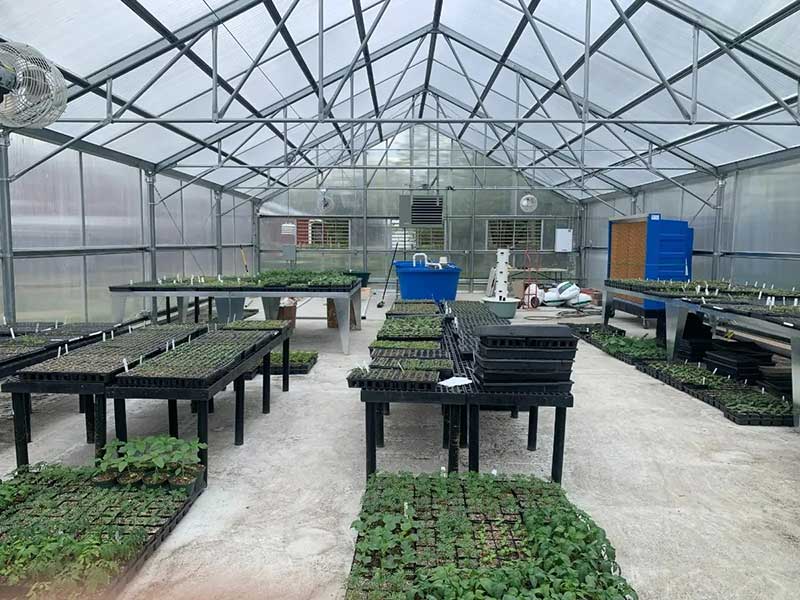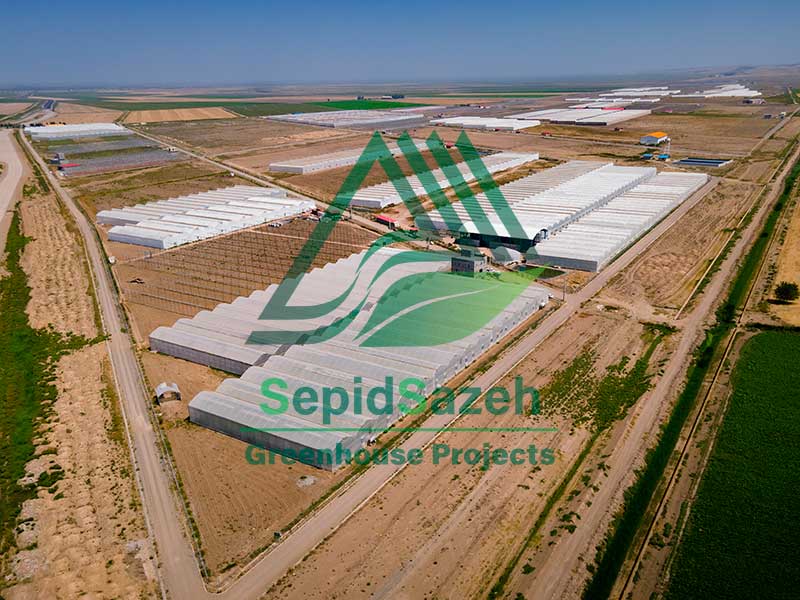Comparing different greenhouse designs and checking the advantages and disadvantages of each one (based on usage)
The goal of building a greenhouse is to create an environment where the maximum growth can be done at the lowest cost
The goal of building a greenhouse is to create an environment where the maximum growth can be done at the lowest cost. Maximum growth includes providing environmental parameters such as temperature, humidity, light and controlling diseases and pests. Considering the phenomenon of photosynthesis and the use of greenhouses in cold seasons and regions, the intensity of light radiation is of great importance. The presence of sufficient light as well as the heat produced by the greenhouse effect create favorable conditions for the phenomenon of photosynthesis. This importance is more in the areas where the intensity of light radiation occurs with a low angle and a short duration. Therefore, the two main parameters of the greenhouse, i.e. the angle of the roof and also the orientation of the greenhouse, are dependent to achieve the maximum light inside the greenhouse. Therefore, the orientation of the greenhouse for the areas Below 40 degrees north, it should be located along the north-south direction, which includes the greenhouses of our country (the highest point of Iran is located at 39.5 degrees north).
Types of greenhouses can be classified in different ways.
- Based on user
- Based on the appearance of the greenhouse
Classification based on user
When a specific use is considered for the greenhouse, its purpose function is also determined. It can be used for the following:
1) Teaching (Teaching Greenhouse)
2) Research (Research Greenhouse)
3) Hobby Greenhouse
4) Commercial Greenhouse
1) Teaching Greenhouse
In this type of greenhouses, the main goal is education, so it should be possible to grow both on the platform and on the ground. This greenhouse has all the standards of a commercial greenhouse and introduces the trainee to the real working conditions. The traffic spaces are more than commercial greenhouses for the purpose of education and are also equipped with all cooling, heating, irrigation and control facilities. The facility should be the least generator of noise pollution and the atmosphere of the greenhouse should be beautiful and attractive like all the training places. The educational greenhouse should be usable in all seasons and the choice of temporary covers should be correct. Providing favorable training conditions is the goal for educational greenhouses, and cost and return on investment are not included in it.

2) Research Greenhouse
All the conditions of an educational greenhouse are also taken into account for the research greenhouse, but for the purpose of research, the conditions for controlling the environmental parameters will be different from commercial greenhouses. Control over diseases and pests, accuracy and accuracy of environmental parameters are directly related to the accuracy of research results. Research can be on contamination and destructive tests on indoor samples, so it is not possible to use common equipment in commercial greenhouses such as ventilation windows to control environmental parameters. In order to accurately control these parameters, research greenhouses will also face size limitations.
3) Hobby Greenhouse
These types of greenhouses are mostly used to keep home pots. The beauty of recreational greenhouses is of particular importance for their use in open spaces of houses or gardens. The area of these greenhouses is small, except for the cases where the space inside is used for reception or rest. The main structure of recreational greenhouses is mainly made of aluminum and wood, and its cover is made of glass or polycarbonate sheets.

4) Commercial Greenhouse
Commercial greenhouses, both production and maintenance, include the largest volume of greenhouses. The basic definition of a greenhouse is true for this type, in which the objective function is to reduce the cost of the product and ensure competition with low risk in the market, minimizing production costs. According to the maximum growth. These types of greenhouses are also divided based on retail or wholesale. The minimum area of the greenhouse is 750 square meters for retail and 1500 square meters for wholesale. In commercial greenhouses, depending on the product, the structure of the greenhouse is determined. High areas in commercial greenhouses bring homogeneity of the environment and lack of tension in the environmental parameters, which is effective in producing a uniform product with the same quality. This size or smallness is completely relative and the management of the greenhouse determines it. But it is not recommended for pest control in higher areas. The use of different coatings as well as modern greenhouses is completely dependent on the consumer market and the sensitivity of the produced product. This problem is explained in the division of greenhouses based on its appearance.

